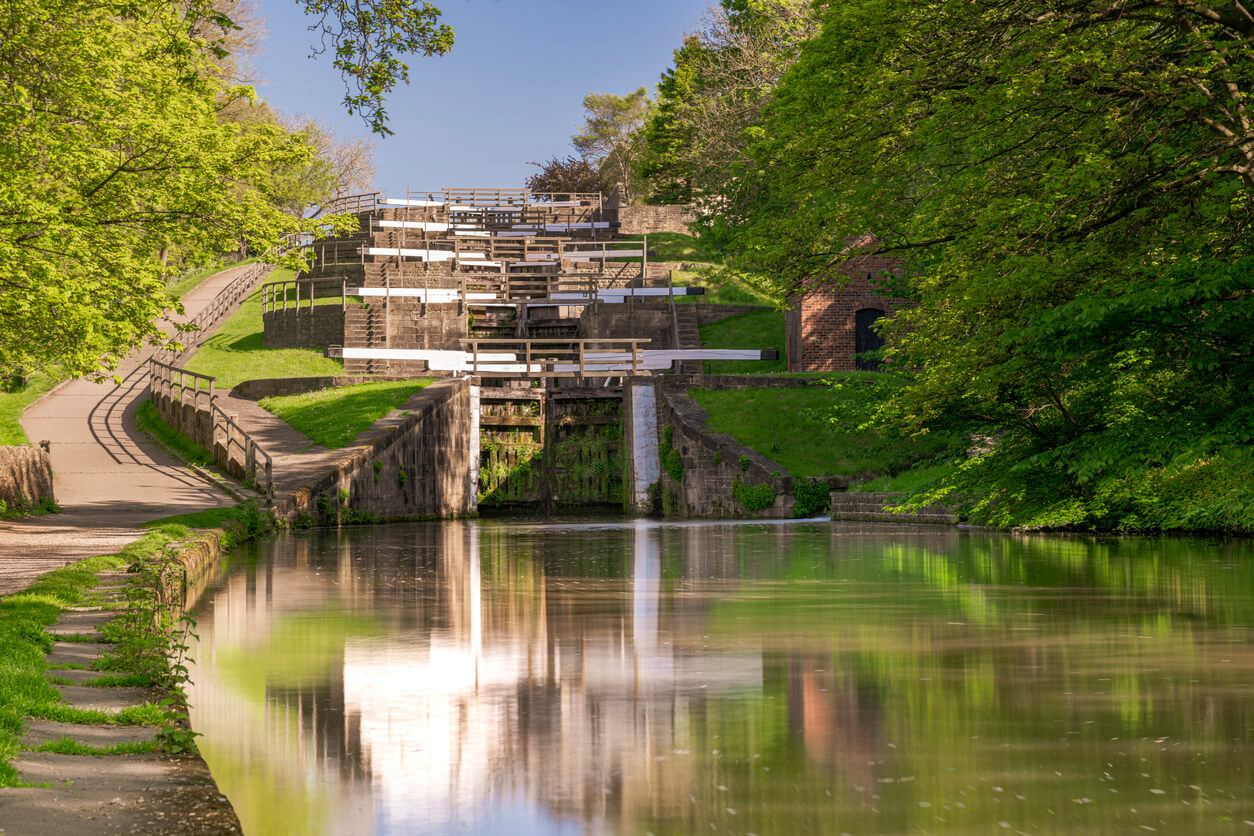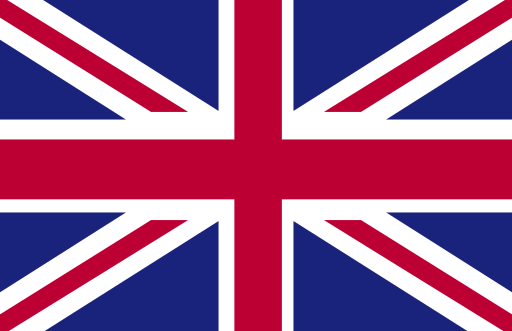Canal boat locks: a beginner’s guide
27 June 2025

Canal boat locks are an interesting feature of any canal adventure, helping boats navigate between different elevations.
In our beginner’s guide to canal boat locks (also called narrowboat locks), we share how they work, the different types you may encounter, and some of the most interesting examples in the UK.
What is a canal lock?
A canal lock is a section of a canal that enables boats to move across different water levels when there are elevation changes. Essentially, they help boats to move up and down hills. When a boat enters the lock, the water level is adjusted so that it can move into the next section of the canal.
Canal locks consist of a chamber and two gates and are uncomplicated to use. You simply need to follow a set of easy steps to move your boat through.
Related: Narrowboat crime: protecting against theft and vandalism
How do canal locks work?
Canal locks work in a simple yet effective way. To raise a boat, the lower gates are locked when the boat enters, and water fills the chamber until the level reaches that of the higher section of the canal. If a boat needs to be lowered, the upper gates are locked, and water is drained from the chamber to gently drop the boat to the next level.
Different types of canal locks
While all canal locks serve the same purpose, there are different types to look out for. These include:
- Single locks – single locks are the easiest to use and feature a gate at each end of the chamber. This means that only one gate will need to be opened or closed. They’re typically found on narrow waterways where space is limited.
- Double locks – double locks consist of two chambers set next to each other, which enable two canal boats to pass through at the same time. They’re also useful for boats that are too wide to use a single lock. These locks reduce waiting time by limiting bottlenecks and offer more water efficiency than having two single locks.
- Pound locks – pound locks have a gate at each end and can be used without impacting the overall level of the canal. Only a small amount of the chamber (pound) needs to be filled for a boat to move through, which makes it a quick and water-efficient solution.
- Broad locks – broad locks are wider than single locks, enabling two boats to use the lock at once. Unlike double locks, they have just one chamber that both boats use together.
How to use a canal lock safely
Locks are easy to use, especially when you’ve encountered them a few times, so there’s no need to worry about coming across them during your canal trip. Here are some tips on how to use a canal lock safely:
- If you don’t feel confident using the lock, moor up and watch someone else do it first
- Try to place your boat into the middle of the lock to avoid it bumping against the edges
- At least one person should stay on board while your boat is in the lock
- If a lock keeper operates the lock, be sure to follow their instructions carefully
- Ensure long hair is tied back and loose clothing is secured
- Grip the windlass (handle) tightly while winding the panel, and do this slowly while paying attention to the water level in the chamber
- Keep the safety catch in place while raising the paddles
- If you need to readjust the windlass at any point, put on the safety catch first
- Remove the windlass from the paddle gear when you’re finished, as unexpected movement could cause it to come off and fall into the canal or injure someone
- Wind the paddles back down after use to prevent them from dropping and becoming damaged
Related: A guide to narrowboat toilets
Canal lock etiquette: Unwritten rules for sharing the waterways
It’s important to consider canal lock etiquette when travelling along the waterways. Unwritten rules include:
- Waiting for an approaching boat to use the lock first if the water is in their favour
- Sharing the lock if it’s wide enough and there’s another boat travelling in your direction
- Putting the safety of yourself and others first when operating a lock
- Closing paddles and gates once you’ve used the lock unless it will benefit an approaching boat
- Giving a wave to other canal boat crews – it’s a very friendly community!
Interesting canal locks to see in the UK
There are around 1800 canal locks across England and Wales and just under 90 locks in Scotland. There are some interesting examples among these that you may be lucky enough to encounter during your trip. Here are some of our favourites:
Tuel Lane Lock
Tuel Lane Lock is the deepest lock in the UK, making it one of the most notable. It has a depth of 6m and can be found along the Rochdale Canal. This lock enables canal boats to tunnel beneath a road and requires help from a lock keeper to navigate it safely.
Bingley Five Rise Locks
A staircase lock located on the Leeds & Liverpool Canal, Bingley Five Rise Locks is the steepest in the UK and helps canal boats to rise 18m across 98m. This lock is such a novelty that it draws visitors who come to watch boats navigate it.
Caen Hill Locks
Perhaps the most impressive locks in the UK, Caen Hill Locks features 29 locks across two miles, and it takes around six hours to navigate them. This lock flight can be found on the Kennet & Avon Canal in Devizes.
Related: Complete guide to buying a narrowboat
Kings Norton Stop Lock
The Kings Norton Stop Lock on the Stratford-upon-Avon Canal is one of the most interesting in the UK as it is an unusual guillotine-gated stop lock. This fascinating lock is grade II listed and hasn’t been used since the 1950s. The gates remain open, so you can pass through and admire the design.
Falkirk Wheel
A boat lift, rather than a lock, the Falkirk Wheel connects the Forth & Clyde Canal to the Union Canal, which sits 35m above it. The wheel was built to replace 11 locks and is a tourist attraction in its own right, as well as an engineering marvel.
Specialist narrowboat insurance through Craftinsure
Heading off on an adventure in your narrowboat? You may want to protect your investment with specialist insurance.
At Craftinsure, our specialist narrowboat insurance provides up to £5m third-party cover and protects your boat against loss or damage from fire or theft. Get an instant online quote today.
Please note the information provided on this page should not be taken as advice and has been written as a matter of opinion. For more on insurance cover and policy wording, see our homepage.


